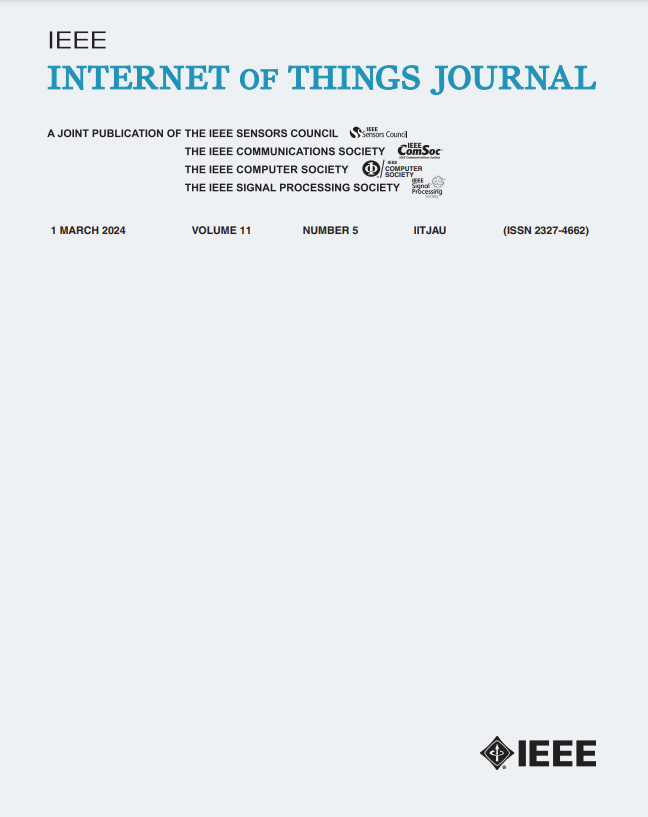IoT-Integrated Variance-Combined Bias Correction for Enhancing Hydrological Forecasting
IF 8.9
1区 计算机科学
Q1 COMPUTER SCIENCE, INFORMATION SYSTEMS
引用次数: 0
Abstract
Accurate streamflow (SF) forecasting is crucial for effective water-resource management amid global climate change. Traditional ensemble SF-forecasting methods, relying on historical data and watershed characteristics, often produce uncertainties in their input, structure, and parameters, reducing their forecasting accuracy. This study introduces a variance-combined bias-correction (VCB) method, integrated with Internet of Things (IoT) technology to improve ensemble SF forecasts’ accuracy and responsiveness. The VCB method significantly improves the SF-forecasting performance by incorporating variance information from ensemble forecasts along with the ensemble mean. We apply the method to the Shiquan Reservoir in China’s Han River basin, and the results show that the VCB method outperforms the Bayesian joint probability (BJP) method, achieving an increases of 8.8% in the Nash-Sutcliffe efficiency (NSE), 0.7% in the Pearson correlation coefficient (PCC), 2.1% in the qualified rate (QR), and a 7.2% reduction in the mean absolute percentage error (MAPE). Furthermore, IoT technology integration improves method inputs’ accuracy and timeliness, showing the strongest performance during extreme weather events. Thus, by improving uncertainty management and forecasting accuracy, the IoT-integrated VCB method provides more effective support for water-resource management. Future research should apply this approach to diverse hydrological contexts and explore deeper integration with machine-learning techniques.基于物联网的方差组合偏差校正增强水文预报
在全球气候变化背景下,准确的流量预测对有效的水资源管理至关重要。传统的集合sf预测方法依赖于历史数据和流域特征,其输入、结构和参数往往存在不确定性,降低了预测精度。本研究引入方差组合偏倚校正(VCB)方法,结合物联网(IoT)技术来提高集合SF预测的准确性和响应性。VCB方法通过将集合预测的方差信息与集合均值结合,显著提高了sf预测的性能。将该方法应用于中国汉江流域石泉水库,结果表明,VCB方法优于贝叶斯联合概率(BJP)方法,NSE提高8.8%,PCC提高0.7%,QR提高2.1%,MAPE降低7.2%。此外,物联网技术集成提高了方法输入的准确性和及时性,在极端天气事件中表现出最强的性能。因此,通过提高不确定性管理和预测精度,物联网集成VCB方法为水资源管理提供了更有效的支持。未来的研究应该将这种方法应用于不同的水文环境,并探索与机器学习技术的更深层次的融合。
本文章由计算机程序翻译,如有差异,请以英文原文为准。
求助全文
约1分钟内获得全文
求助全文
来源期刊

IEEE Internet of Things Journal
Computer Science-Information Systems
CiteScore
17.60
自引率
13.20%
发文量
1982
期刊介绍:
The EEE Internet of Things (IoT) Journal publishes articles and review articles covering various aspects of IoT, including IoT system architecture, IoT enabling technologies, IoT communication and networking protocols such as network coding, and IoT services and applications. Topics encompass IoT's impacts on sensor technologies, big data management, and future internet design for applications like smart cities and smart homes. Fields of interest include IoT architecture such as things-centric, data-centric, service-oriented IoT architecture; IoT enabling technologies and systematic integration such as sensor technologies, big sensor data management, and future Internet design for IoT; IoT services, applications, and test-beds such as IoT service middleware, IoT application programming interface (API), IoT application design, and IoT trials/experiments; IoT standardization activities and technology development in different standard development organizations (SDO) such as IEEE, IETF, ITU, 3GPP, ETSI, etc.
 求助内容:
求助内容: 应助结果提醒方式:
应助结果提醒方式:


